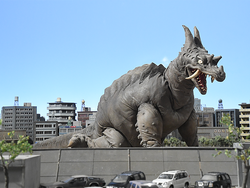| Article |
| Pagos | |||
| Subtitle | Underground Monster (地底怪獣 Chitei Kaijū) | ||
|---|---|---|---|
| Type | Kaiju | ||
| Home world | Earth | ||
| Height | Showa & 2019: 30 meters[1] 2020: | ||
| Weight | Showa: 18,000 metric tons | ||
| Relations | Belyudra (component), Alien Zelan (summoner) | ||
| Enemies | Ultraman Taiga, Ultraman Titas, Ultraman Fuma, Windom, King Joe STORAGE Custom | ||
| Portrayed by | To be added | ||
| First appearance | Ultra Q episode 18, The Rainbow's Egg (1966) | ||
| Latest appearance | Ultraman Z episode 23, Prelude to a Nightmare (2020) | ||
| Roars | |||
Pagos (パゴス Pagosu) is a prehistoric subterranean reptile kaiju that first appeared in episode eighteen the 1966 television series Ultra Q.
Design
Pagos has a bulky body and moves on four limbs. His head is elongated, and he has many sharp teeth, as well as two long fangs, in his mouth. Pagos has five horns: one on the nose, two above the eyes, and two more on the crown. These two horns on the top of the head are the longest and directed backwards. On the back Pagos has wide low plates, like Baragon.
Origins
To be added
History
Ultra Q
The Rainbow's Egg
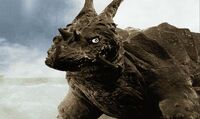
Pagos in Ultra Q
To be added
Ultraman Taiga
The Afternoon When the Magic of Stars was Lost
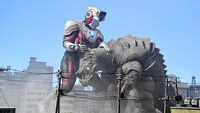
Pagos against Titas in Ultraman Taiga
To be added
Ultraman Z
Re-Challenge from the Year 2020
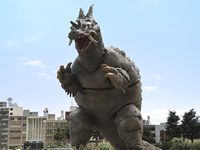
Pagos in Re-Challenge from the Year 2020
To be added
Prelude to a Nightmare
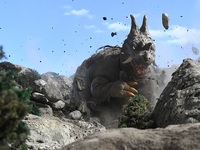
Pagos in Prelude to a Nightmare
To be added
Abilities
Burrowing
Being a subterranean monster, Pagos is capable of burrowing.
Energy Beam
To be added
Weakness
To be added
Gallery
- Main article: Pagos/Gallery
Roar
Pagos' roars are reused Varan roars.
Trivia
- Pagos was the first of the four ultra monsters that were created by modifying Toho's Baragon suit, with the others being Neronga, Magular, and Gabora.
References
This is a list of references for Pagos. These citations are used to identify the reliable sources on which this article is based. These references appear inside articles in the form of superscript numbers, which look like this: [1]
| |||||||||||||||||||||||
| |||||||||||||||||||||||||||||
| ||||||||||||||||||||||||||||||||

